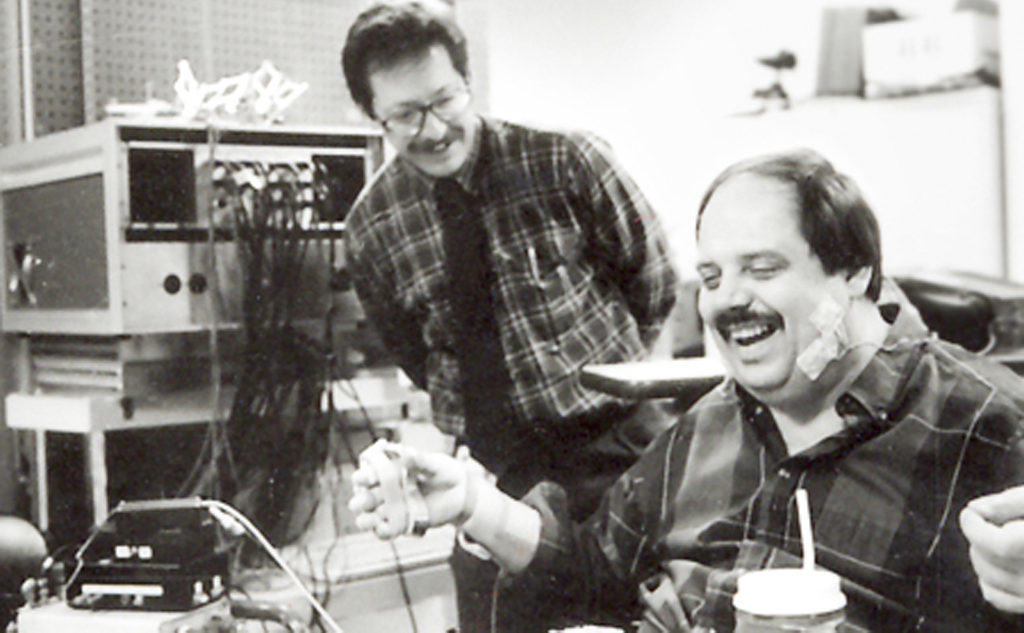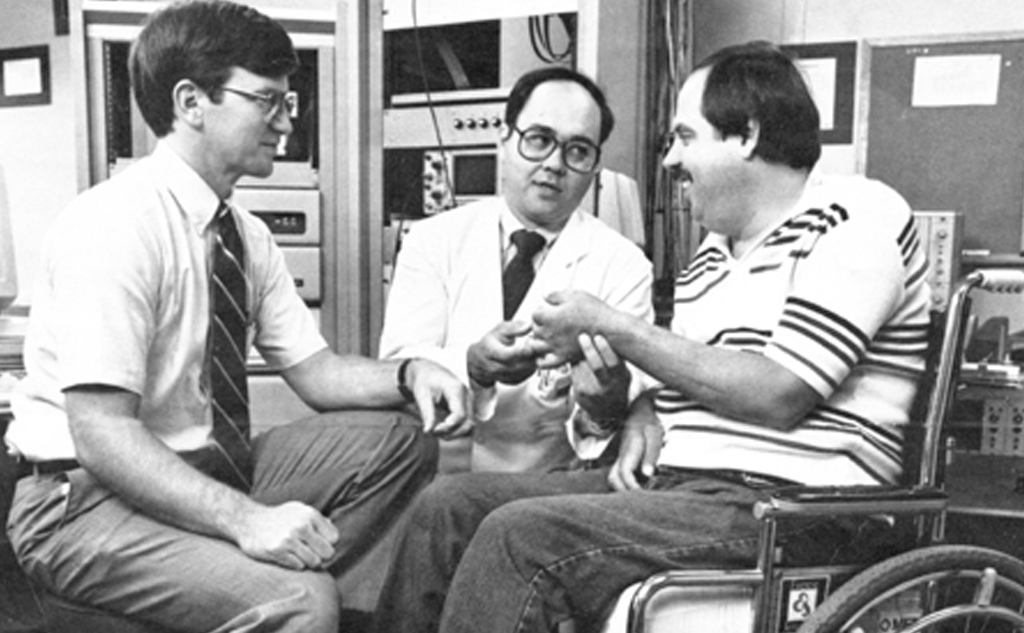History of the FES Center
Established in 1991, the FES Center is a consortium with institutional partners: Louis Stokes Cleveland VA Medical Center (CVAMC), the private educational institution of Case Western Reserve University (CWRU), and the public hospital system of MetroHealth Medical Center (MHMC). In 2015 University Hospitals (UH) joined the consortium, and in 2017 the Cleveland Clinic Neurological Institute.


The Center focuses on the application of electrical currents to either generate or suppress activity in the nervous system. This technique is known as functional electrical stimulation (FES). FES can produce and control the movement of otherwise paralyzed limbs for standing and hand grasp, activate visceral bodily functions such as bladder control or respiration, create perceptions such as skin sensibility, arrest undesired activity such as pain or spasm, and facilitate natural recovery and accelerate motor relearning.
The Functional Electrical Stimulation Center was founded to introduce FES into clinical practice. Our challenge is to translate fundamental knowledge of electrical stimulation of paralyzed nerves and muscles into useful systems that enhanced the independence and quality of life for people with disabilities. We advance toward this goal by integrating and facilitating the efforts of scientists, engineers, and clinicians across the institutional partners.
In an exciting environment of leading scientists, engineers, clinicians, students, and fellows working together, we explore new techniques of medical rehabilitation and enable FES knowledge to develop into useful products. We are pleased to provide systems that assist people in improving their lives after the devastating consequences of central nervous system trauma and paralysis.
For over three decades, researchers and clinicians of the Cleveland FES Center have impacted virtually every aspect of implanted functional electrical stimulation as leaders in the development of the science and technology of neural activation and its clinical application.
Core funds are provided by the Department of Veterans Affairs, Office of Rehabilitation Research & Development (RR&D). The core support provides infrastructure services that are both unique and critical to the continued success of our program. The Center catalyzes both fundamental discovery and clinical research activities, supports the operational elements necessary to provide a seamless transition of new technology and knowledge into clinical practice, and insures that knowledge is accurately and promptly disseminated.
The Center provides an environment for the professional growth and development of investigators, and draws new scientists and clinicians into rehabilitation research. It provides mentoring by skilled and experienced senior scientists and clinicians who serve as effective role models and who assist in the development of professional careers through their counseling, encouragement, and ongoing review.
